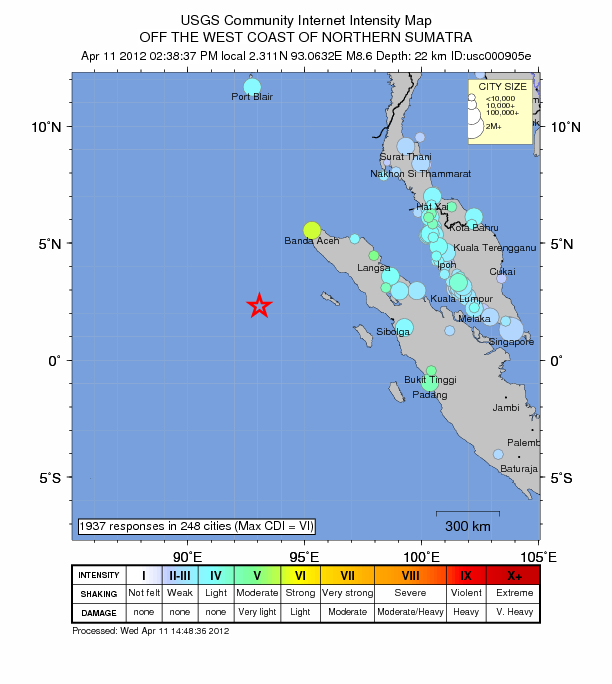
Why Today's Indonesia Quake Didn't Make a Monster Tsunami

The magnitude 8.6 earthquake that struck in the Indian Ocean off the western coast of Sumatra today resurrected fears of a repeat of the 2004 Indian Ocean earthquake and tsunami that proved one of the most devastating natural disasters in modern memory.
However, this earthquake, which struck at 2:38 p.m. local time (4:38 a.m. ET), about 270 miles (435 kilometers) off the coast of the Indonesian island was a different animal altogether than the 2004 earthquake and tsunami, which killed more than 230,000 people and left millions homeless.
"It was quite a bit smaller," said Julie Dutton, a geophysicist with the U.S. Geological Survey. The 2004 quake was a magnitude 9.1 — the third most powerful earthquake ever recorded.
Perhaps more significantly, today's earthquake was a different kind of quake all together. Instead of occurring at a plate boundary along an area called a subduction zone, where one tectonic plate is diving beneath another, this earthquake occurred in the middle of an oceanic plate, where the faults in the crust essentially moved from side to side instead of up and down. These sorts of events are called strike-slip earthquakes.
"With a strike-slip event you don't have the same potential hazard for a tsunami as you do with a subduction event because the plates are moving adjacent to each other," Dutton told OurAmazingPlanet.
Although they are sometimes produced by landslides on the seafloor, significant tsunamis are typically created by subduction earthquakes, when one massive oceanic plate suddenly lurches deeper beneath another plate, shoving up a huge section of the seafloor. That displacement of the ocean floor also displaces ocean water. Essentially, the more ocean floor you move, and the more dramatically you move it, the more water you move, and the bigger the tsunami you get.
Just minutes after the earthquake struck today, the U.S. Pacific Tsunami Warning Center in Hawaii issued a tsunami watch for the entire Indian Ocean region.
Sign up for the Live Science daily newsletter now
Get the world’s most fascinating discoveries delivered straight to your inbox.
A little more than an hour after the first and largest quake hit, the watch was still in effect, and tsunami wave heights of 1 foot were recorded in Sabang, in Indonesia's Banda Aceh province, the region that was most affected by the 2004 disaster.
The largest tsunami produced was about 3 feet (1 meter) high, according to the tsunami warning center, which has now cancelled all watches for the area.
Dutton said that it is unusual to see such a powerful earthquake in the region where today's quake struck, "but it's not unheard of," she added.
Reach Andrea Mustain at amustain@techmedianetwork.com. Follow her on Twitter @AndreaMustain. Follow OurAmazingPlanet for the latest in Earth science and exploration news on Twitter @OAPlanet and on Facebook.









